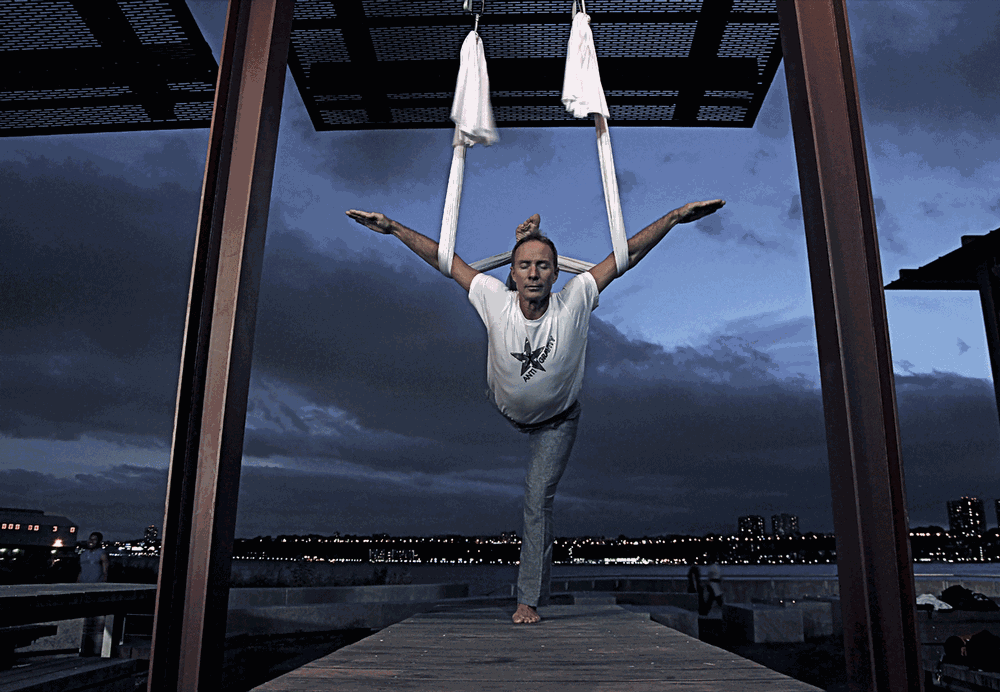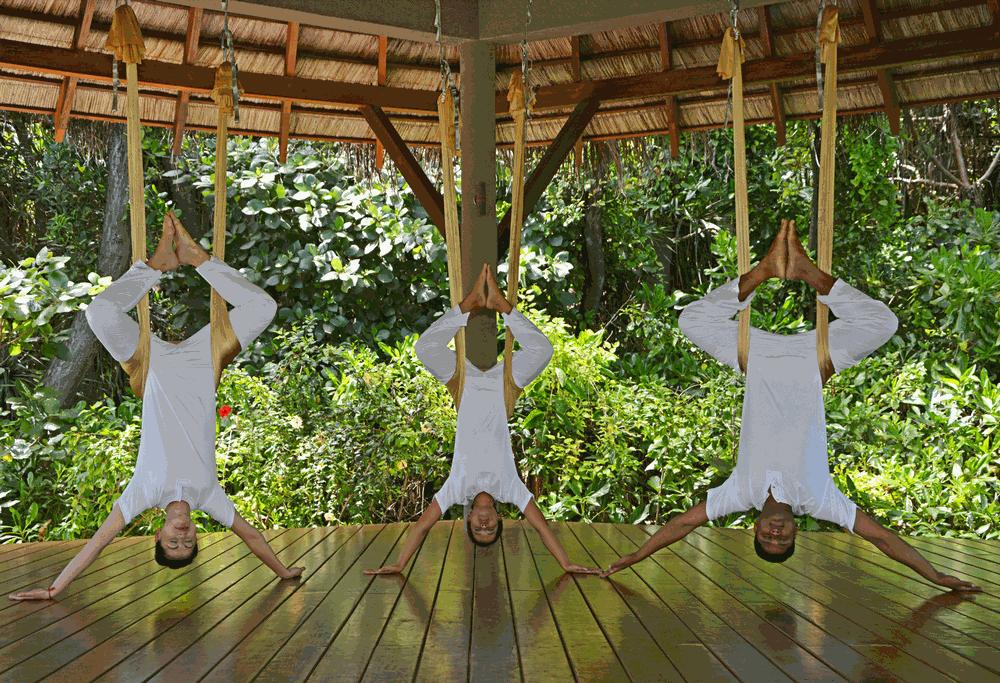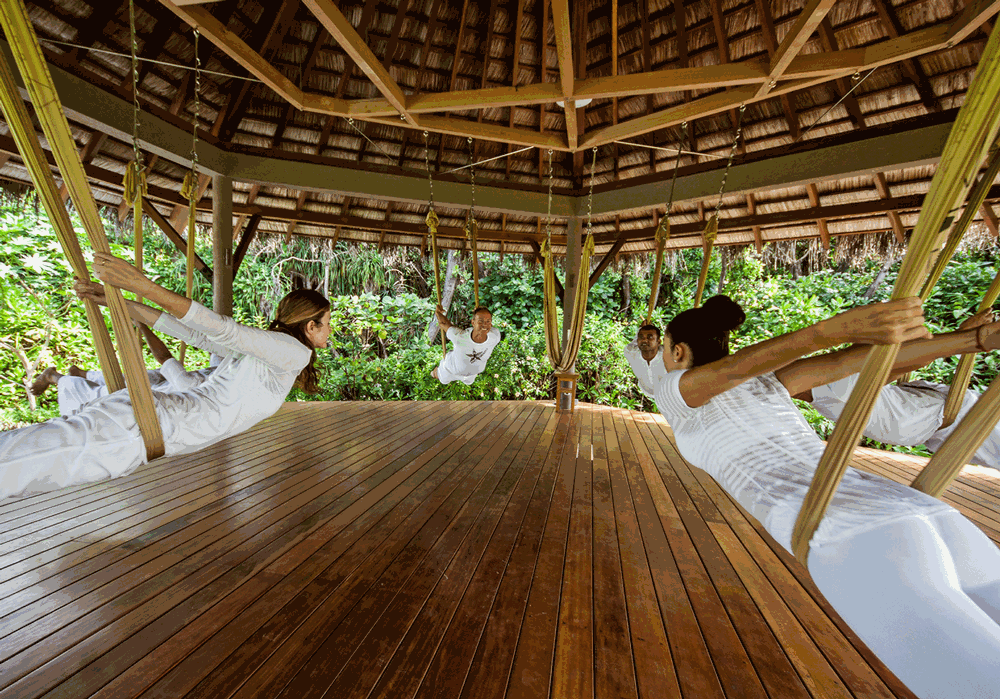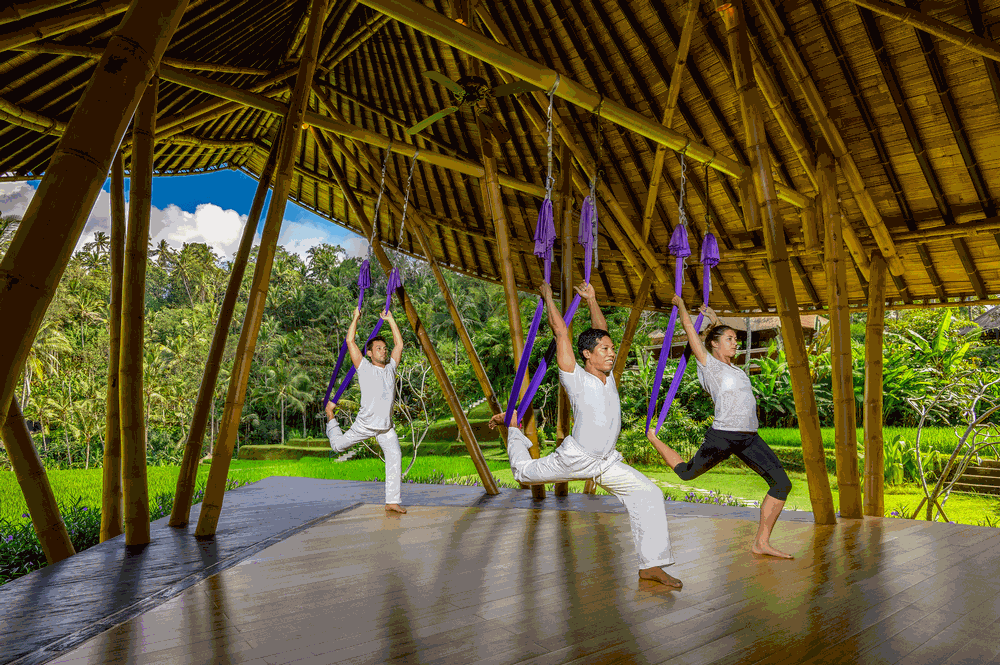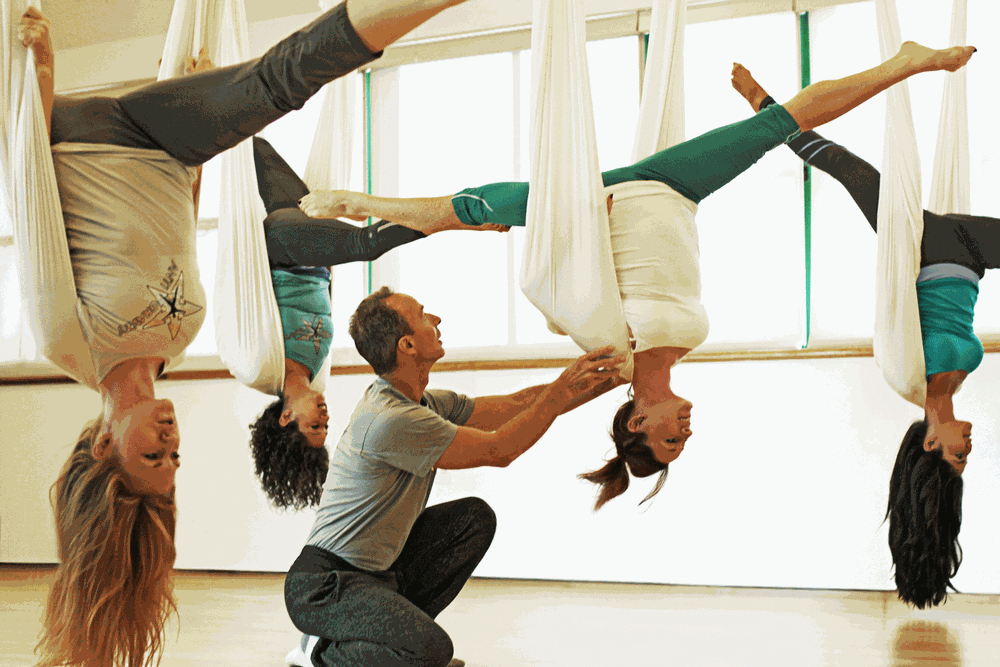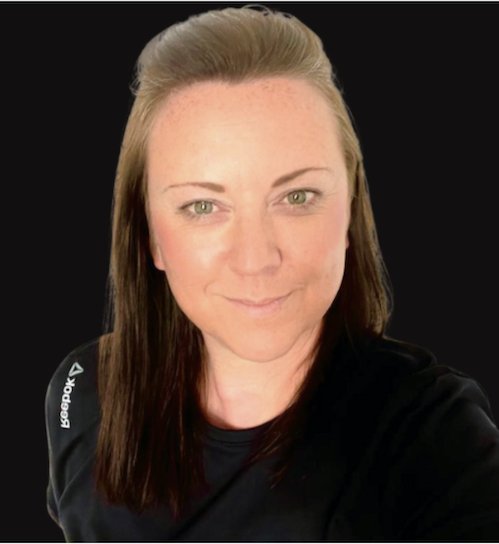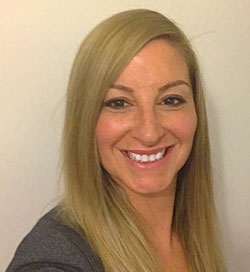Christopher Harrison is a man whose feet rarely touch the ground. A world-class gymnast and Broadway dancer, he founded the entertainment brand AntiGravity in New York in 1991. Since then, he’s designed over 400 aerial productions in settings as diverse as Broadway, Olympic stadiums and the inauguration of President Obama.
Harrison is also the creator of AntiGravity Aerial Yoga, one of the seven techniques that sit under the umbrella of AntiGravity Fitness. The restorative form of yoga has become famous for its zero-compression inversions using a silk hammock, and has gained a huge following – from celebrities like Madonna and Gwyneth Paltrow through to martial arts athletes and professional skiers. His mission: to spread health and happiness through movement.
Inspiration from India
Harrison began practising yoga after visiting India in the mid-90s. He found it helped him to become more mindful and present in both his life and his movement. “I began to meditate and discovered that things started to flow easier, because I could let go of the frantic energy of living in New York City,” he says.
“As a gymnast and a dancer who’d performed in Cats, I’d pushed my body so hard it was beaten up by the time I was 33. I discovered the best way to deal with compression injuries is decompression – and the one way to decompress in our society is through practising yoga.”
To help eliminate compression on the spine even further, Harrison began experimenting with a hammock he’d originally created for stage performances, the silk fabric of which acted like a soft trapeze to suspend the body during yoga and help with alignment. By putting the hammock at the same height as a ballet barre, he started adapting different moves from other disciplines such as pilates, aerial arts, gymnastics and dance. He realised that, by using its support, he could also go deeper into a yoga pose.
Stress-reliever
Two decades on and AntiGravity Fitness is available in over 400 facilities across 50 countries, with Aerial Yoga – the first discipline to be launched to market – one of the most popular offerings.
A typical Aerial Yoga class is low impact, with a focus on mobility and agility. For the more advanced, there are a number of challenging poses that work the cardiovascular system and build strength. A session lasts 60–90 minutes and can include crunches, squats, push-ups and jumping jacks. The hammock acts as a support for other moves such as inversions, handstands and front flips.
One of the main benefits this form of yoga brings over traditional practices is the ability for users to go into a zero-compression inversion. “When you’re hanging upside down, it takes away all the stress that’s been pushing on the discs of your spine,” explains Harrison. “You’re creating space, which allows the discs to hydrate and very often helps relieve back pain from the first session.
“It also releases serotonin, endorphins, oxytocin and dopamine – happy hormones that make it easier for you to cope with life, lose weight and refresh the digestive system.” Other positive side-effects include improvement in flexibility, alignment, balance, joint mobility and muscular strength.
PT & massage
The latest development is AntiGravity 1on1 – a new offering for personal trainers which debuted in 15 countries in late February 2016 and which takes the notion of decompression even further.
In the first programme from the AntiGravity 1on1 stable – a 30-minute sequence known as ‘D-kink’ – personal trainers use the hammock to provide variety and balance in a workout, or alternatively to create an effective cool-down at the end of a session. Possible moves in the sequence include enhanced stretching, spinal traction, the zero-compression inversion and a floating rest.
D-kink is the first of many 1on1 therapeutic sessions Harrison is designing for personal trainers.
And then there’s AntiGravity Floating Massage – a specialist treatment that Harrison is currently developing. As the concept is still being created, Harrison is reluctant to share too many details, but he describes it as a complex technique that will allow a licensed therapist to manipulate the client into a weightless state (presumably using the silk hammock in some way) in combination with massage therapy.
He adds: “All I can say is that, once suspended in mid-air, the body reacts to manipulation very differently. The therapist has leverage that he/she would not be able to attain if the body were lying on a hard surface. The resulting benefits for the recipient are truly amazing.”
Expect to see Floating Massage rolling out in spas by the end of the year, with Four Seasons already signed up. There’s a clear opportunity for high-end health clubs to get in on the act too.








